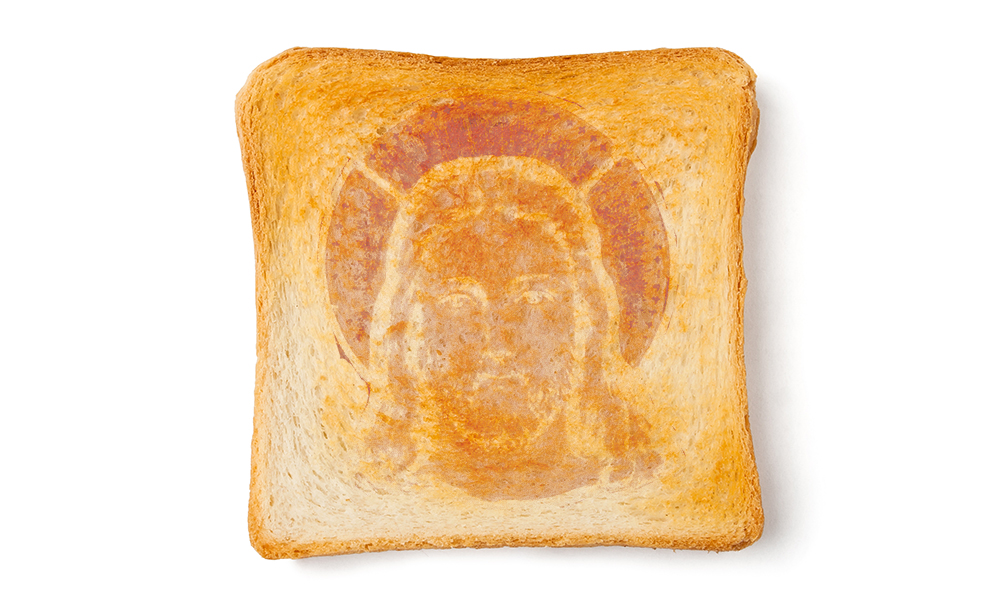Christ on a Cracker! Why We See Faces in Everything

WASHINGTON — People have "seen" Jesus Christ on nearly everything, including crackers, tortillas, pierogis, fish sticks and even on the hindquarters of a dog.
The experience of finding patterns, especially faces, in random data is a phenomenon known as pareidolia. Humans are particularly prone to these types of misidentifications, possibly because they may have provided evolutionary advantages, such as helping people avoid getting eaten by bears, Laura Lanford, a computer scientist from Chicago told an audience here today (May 18) at the Nerd Nite Global Fest.
"Pareidolia doesn’t distinguish between something or nothing," said Lanford, whose talk was part of Smithsonian Magazine's two-day "Future is Here" festival, celebrating science and science fiction. [Seeing Things On Mars: A History of Martian Illusions]
Lanford’s interest in pareidolia and other pitfalls of human thinking is a hobby, but she got into it, she said, because the general public isn’t very aware of these topics.
Humans make two types of statistical errors, she said: type 1 errors and type 2 errors. A type 1 error involves seeing something when there’s nothing, which Lanford called "paranoia." A type 2 error is seeing nothing when there actually is something, which she called "obliviousness."
Humans may be especially susceptible to type 1 errors — such as seeing the face of Christ on a cracker — because they are evolutionarily advantageous, Lanford said.
For example, if a person sees a bear and a bear is indeed there, the person can run away. If that person didn’t see a bear and there really was none, it would no big deal, Lanford said. But if the person didn’t see a bear and there was one, this would be a big problem. As such, it's better to mistakenly think there is a bear when there isn't, and not get eaten.
Sign up for the Live Science daily newsletter now
Get the world’s most fascinating discoveries delivered straight to your inbox.
The part of the brain that recognizes faces is called the fusiform gyrus, and it has two sides, Lanford said. The left side performs a fast, intuitive judgment of whether something is a face or not, while the right side makes a slower, more accurate judgment. But, the latter takes more time and effort, and “brains are lazy,” and often leap to conclusions, said added.
Seeing faces where there aren’t any isn’t the only form of deception to which human brains fall victim. Attributing abnormal meaning to what we see is known as apophenia. For example, people sometimes interpret seeing "ghosts" or "UFOs" as signs of paranormal activity.
Humans also have a tendency to only believe evidence that supports what they already believe. Known as confirmation bias, this phenomenon forms the basis for many conspiracy theories, Lanford said.
All of these phenomena add further weight to what theoretical physicist Richard Feynman once said: "The first principle is that you must not fool yourself — and you are the easiest person to fool."
Follow Tanya Lewis on Twitter and Google+. Follow us @livescience, Facebook & Google+. Original article on Live Science.










